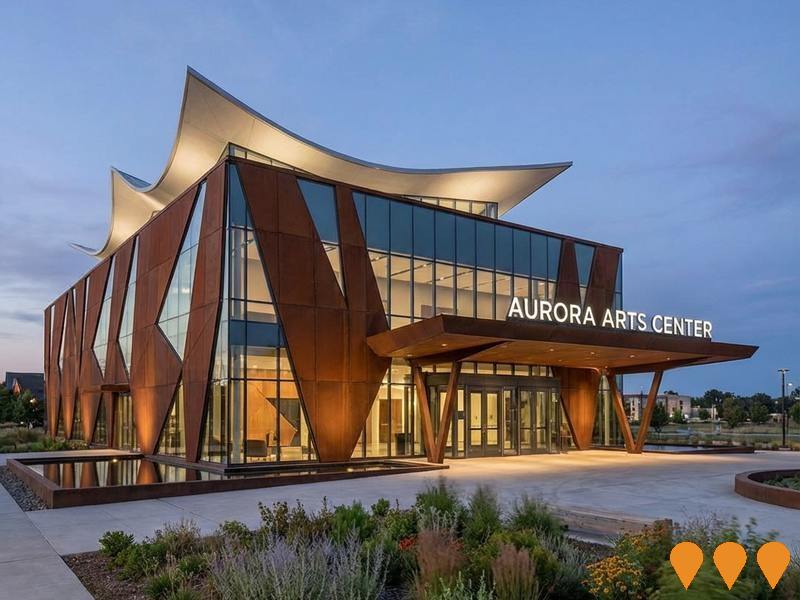Chart Color Schemes
est. as @ -- *
ABS ERP | -- people | --
2021 Census | -- people
Sales Activity
Curious about local property values? Filter the chart to assess the volume and appreciation (including resales) trends and regional comparisons, or scroll to the map below view this information at an individual property level.
Find a Recent Sale
Sales Detail
Population
Double Bay - Darling Point is positioned among the lower quartile of areas assessed nationally for population growth based on AreaSearch's assessment of recent, and medium term trends
Based on AreaSearch's analysis, Double Bay - Darling Point's population is around 10,268 as of Nov 2025. This reflects an increase of 310 people (3.1%) since the 2021 Census, which reported a population of 9,958 people. The change is inferred from the estimated resident population of 10,248 from the ABS as of June 2024 and an additional 42 validated new addresses since the Census date. This level of population equates to a density ratio of 6,582 persons per square kilometer, which lies in the top 10% of national locations assessed by AreaSearch. Double Bay - Darling Point's 3.1% growth since census positions it within 2.4 percentage points of the SA3 area (5.5%), demonstrating competitive growth fundamentals. Population growth for the area was primarily driven by overseas migration that contributed approximately 86.4% of overall population gains during recent periods.
AreaSearch is adopting ABS/Geoscience Australia projections for each SA2 area, as released in 2024 with 2022 as the base year. For any SA2 areas not covered by this data, AreaSearch is utilising the NSW State Government's SA2 level projections, as released in 2022 with 2021 as the base year. Growth rates by age group from these aggregations are also applied to all areas for years 2032 to 2041. Moving forward with demographic trends, a population increase just below the median of statistical areas across the nation is expected, with the area expected to grow by 726 persons to 2041 based on the latest population numbers, with an increase of 6.9% in total over the 17 years.
Frequently Asked Questions - Population
Development
AreaSearch assessment of residential development drivers sees a low level of activity in Double Bay - Darling Point, placing the area among the bottom 25% of areas assessed nationally
Over the past five financial years, from FY18 to FY22, Double Bay - Darling Point has seen approximately 21 residential properties granted approval annually, totaling 107 homes. As of FY26 so far, there have been 3 recorded approvals. The population in the area has declined recently, suggesting that new supply has kept pace with demand, providing good options for buyers. The average expected construction cost value of new homes is $1,586,000, indicating that developers are targeting the premium market segment with higher-end properties.
In FY26 to date, $14.9 million in commercial approvals have been registered, demonstrating moderate levels of commercial development in the area. When compared to Greater Sydney, Double Bay - Darling Point records about three-quarters the building activity per person and ranks among the 30th percentile nationally, resulting in relatively constrained buyer choice and supporting interest in existing dwellings. New building activity shows a focus on higher-density living, with approximately 88% townhouses or apartments compared to 12% standalone homes. This trend creates more affordable entry points and caters to downsizers, investors, and first-home buyers. The area has a population density of around 577 people per approval, indicating maturity and established status.
Population forecasts project Double Bay - Darling Point will gain approximately 706 residents by 2041. Building activity appears to be keeping pace with growth projections, though increased competition among buyers is expected as the population grows.
Frequently Asked Questions - Development
Infrastructure
Double Bay - Darling Point has strong levels of nearby infrastructure activity, ranking in the top 30% nationally
Changes to local infrastructure significantly impact an area's performance. AreaSearch has identified 62 projects likely to affect the region. Notable initiatives include Ode Double Bay, located at 252-254 New South Head Road in Double Bay; the Eastern Suburbs Railway Line; and the InterContinental Double Bay $1 Billion Mixed-Use Redevelopment. The following list details those expected to have the most relevance.
Professional plan users can use the search below to filter and access additional projects.
INFRASTRUCTURE SEARCH
 Denotes AI-based impression for illustrative purposes only, not to be taken as definitive under any circumstances. Please follow links and conduct other investigations from the project's source for actual imagery. Developers and project owners wishing us to use original imagery please Contact Us and we will do so.
Denotes AI-based impression for illustrative purposes only, not to be taken as definitive under any circumstances. Please follow links and conduct other investigations from the project's source for actual imagery. Developers and project owners wishing us to use original imagery please Contact Us and we will do so.
Frequently Asked Questions - Infrastructure
Eastern Suburbs Railway Line
Historic underground railway line connecting Martin Place, Kings Cross, Edgecliff and Bondi Junction. This critical transport infrastructure serves the Eastern Suburbs and provides essential connectivity to the CBD.

InterContinental Double Bay $1 Billion Mixed-Use Redevelopment
Redevelopment of the former InterContinental Hotel site into a $1 billion, eight-storey mixed-use precinct designed by Cox Architecture. The landmark development will feature a 39-room boutique hotel, 29 luxury residences, high-end retail, dining, commercial offices, a wellness centre, and public domain improvements.

Kiaora Lands Precinct Redevelopment
A major mixed-use urban renewal precinct in Double Bay, completed around 2015-2017. The redevelopment revitalized the area and includes the state-of-the-art Woollahra Library at Kiaora Place, council chambers, community facilities, a Woolworths supermarket, approximately 20 specialty retail stores, two levels of commercial office space, and 80 residential apartments above. The project also includes a public plaza and an underground carpark with approximately 442 to 500 spaces. The development won the NSW Urban Taskforce Award for Retail Development in 2016 and was a finalist for a PCA Innovation & Excellence Award in 2017.

Hakoah White City Redevelopment
Redevelopment of the former White City Tennis Club into a community sports and culture hub open to all, featuring 9 tennis courts, a full size football field with grandstand, 25m heated pool plus learn to swim pool, multi use courts, gym and fitness studios, food and beverage, meeting spaces and parking for about 270 cars. Construction paused in 2024 during a builder transition and is now targeting first half 2026 opening, with recent design refinements and security upgrades.
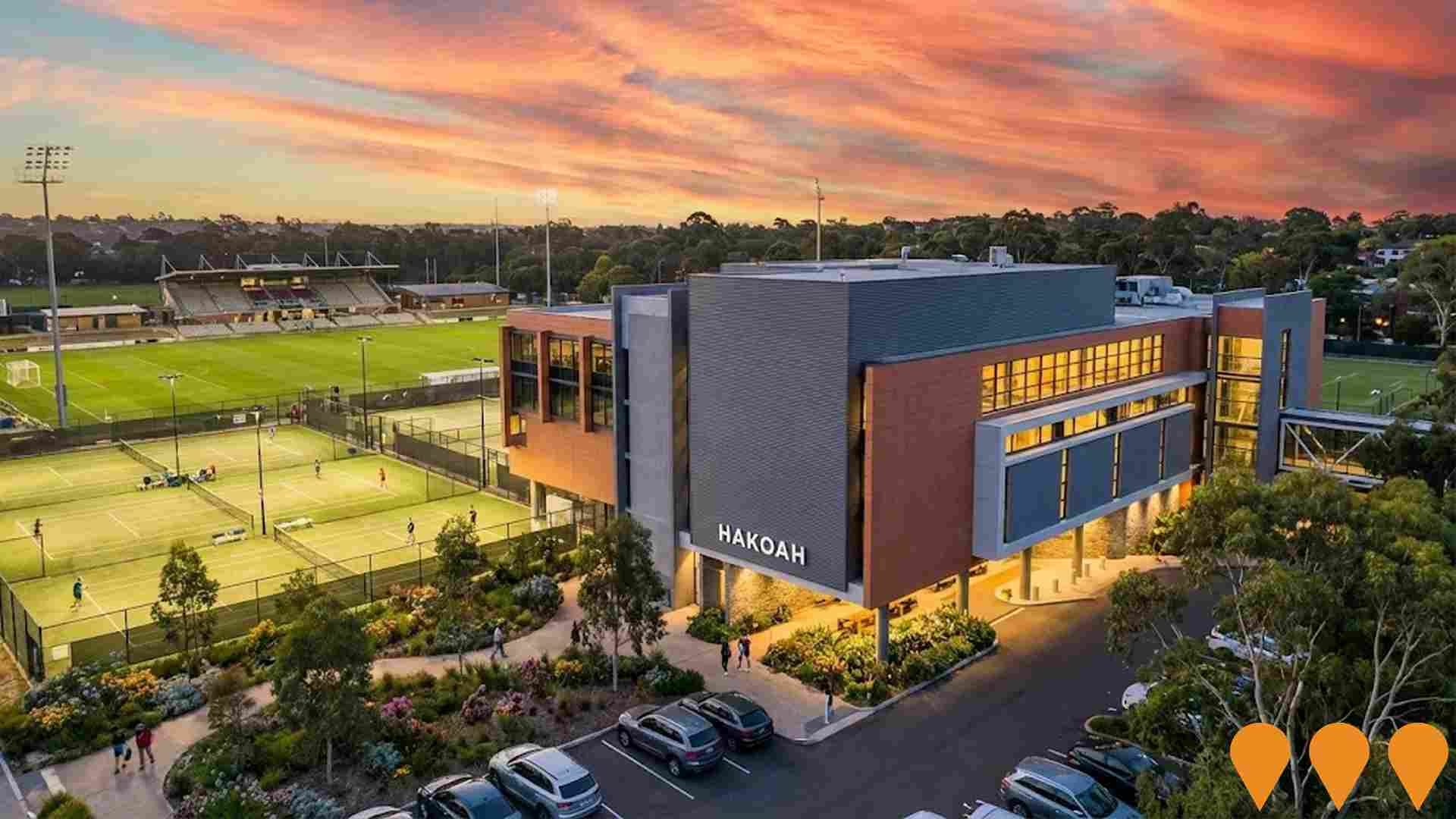
The Centennial Collection
A curated collection of 73 luxury apartments across two 10-level towers by Stargate Property, featuring panoramic harbour, city skyline and parkside views. Designed by SJB Architects with premium finishes including rooftop pools, concierge services, and wine cellars. Located opposite Centennial Park.
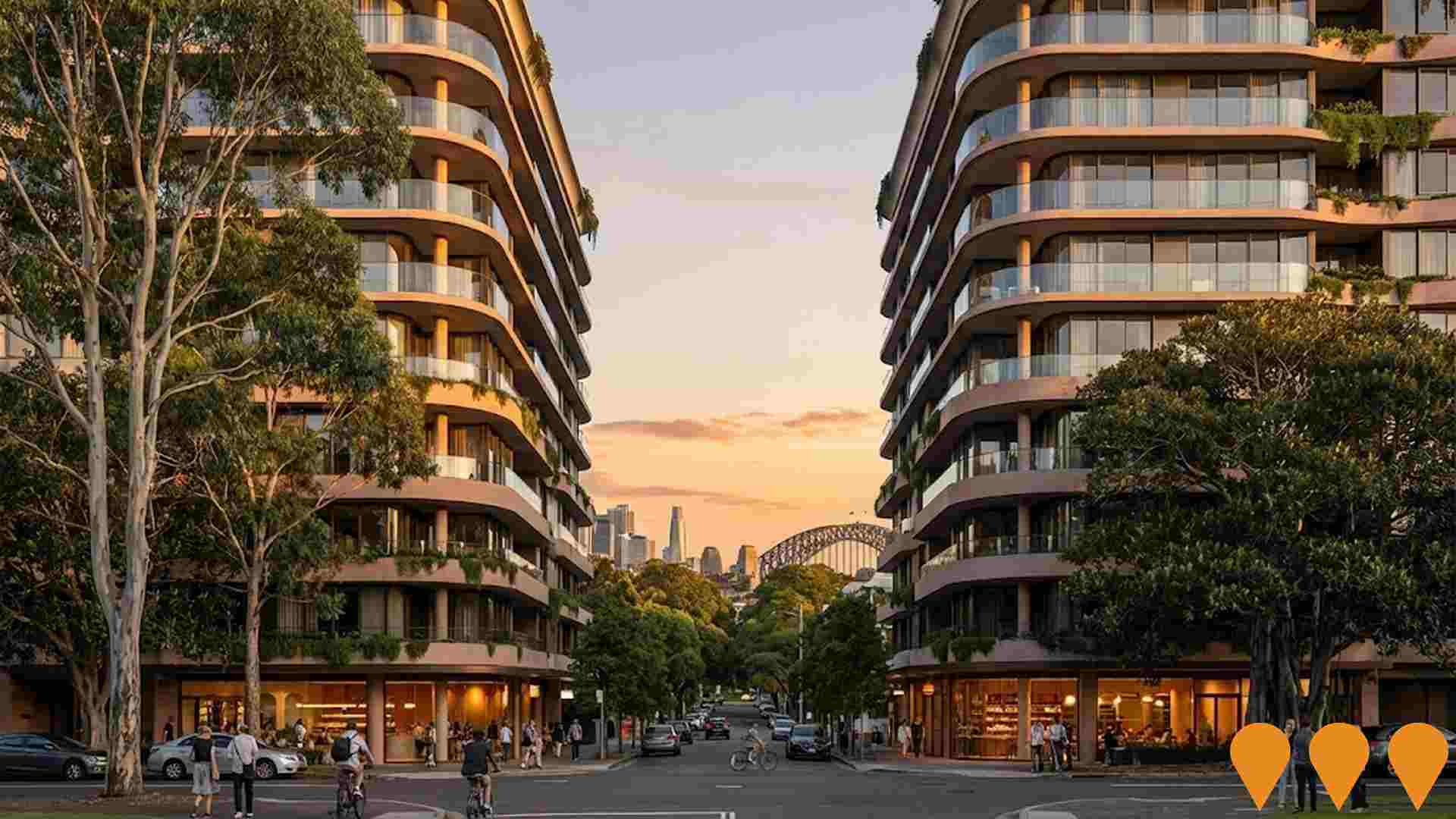
Ode Double Bay
An iconic mixed-use development by award-winning developer Top Spring Australia designed by celebrated architect Luigi Rosselli with interiors by Atelier Alwill. Features 15 boutique three and four-bedroom apartments and penthouses across six levels with expansive internal floor areas between 219-311 sqm. Offers magnificent harbour views, dedicated concierge services, retail and dining downstairs, and ultra-customizable luxury finishes including three stone and two joinery options for kitchens, with timber or travertine flooring options. Construction commenced with sales exceeding $100 million, setting new pricing records for Double Bay.
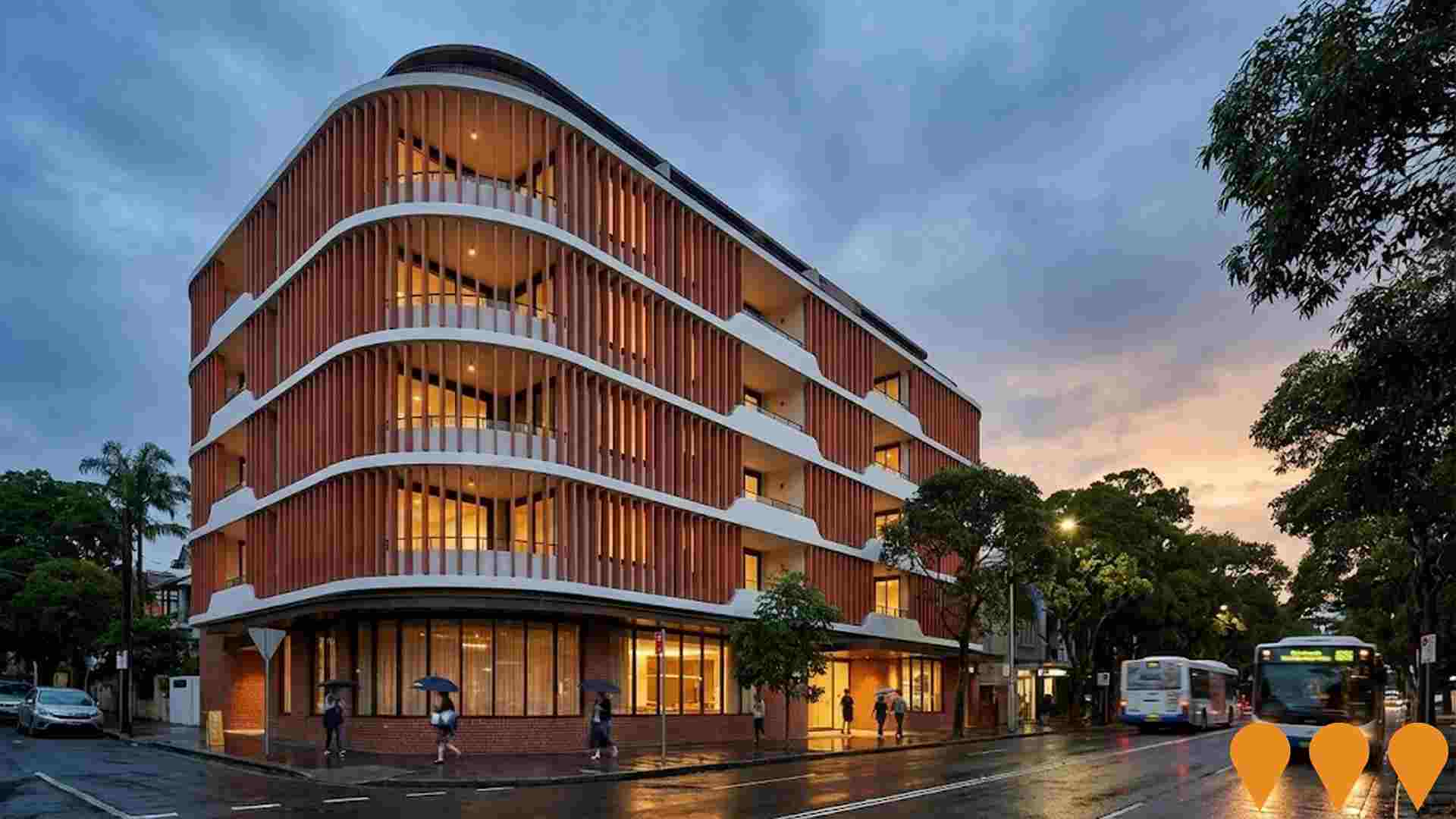
One Darling Point
A luxury $500-million 17-storey mixed-use development by Lendlease and Mitsubishi Estate Asia in Sydney's Darling Point. Features 41 premium apartments, 18 affordable housing units (total 59 dwellings), nearly 1,750 sqm of commercial/retail space, rooftop pool, restored 1941 heritage Commonwealth Bank fa‡ade, public through-site link and harbour views. Designed by Tzannes with interiors by Alexander &CO.
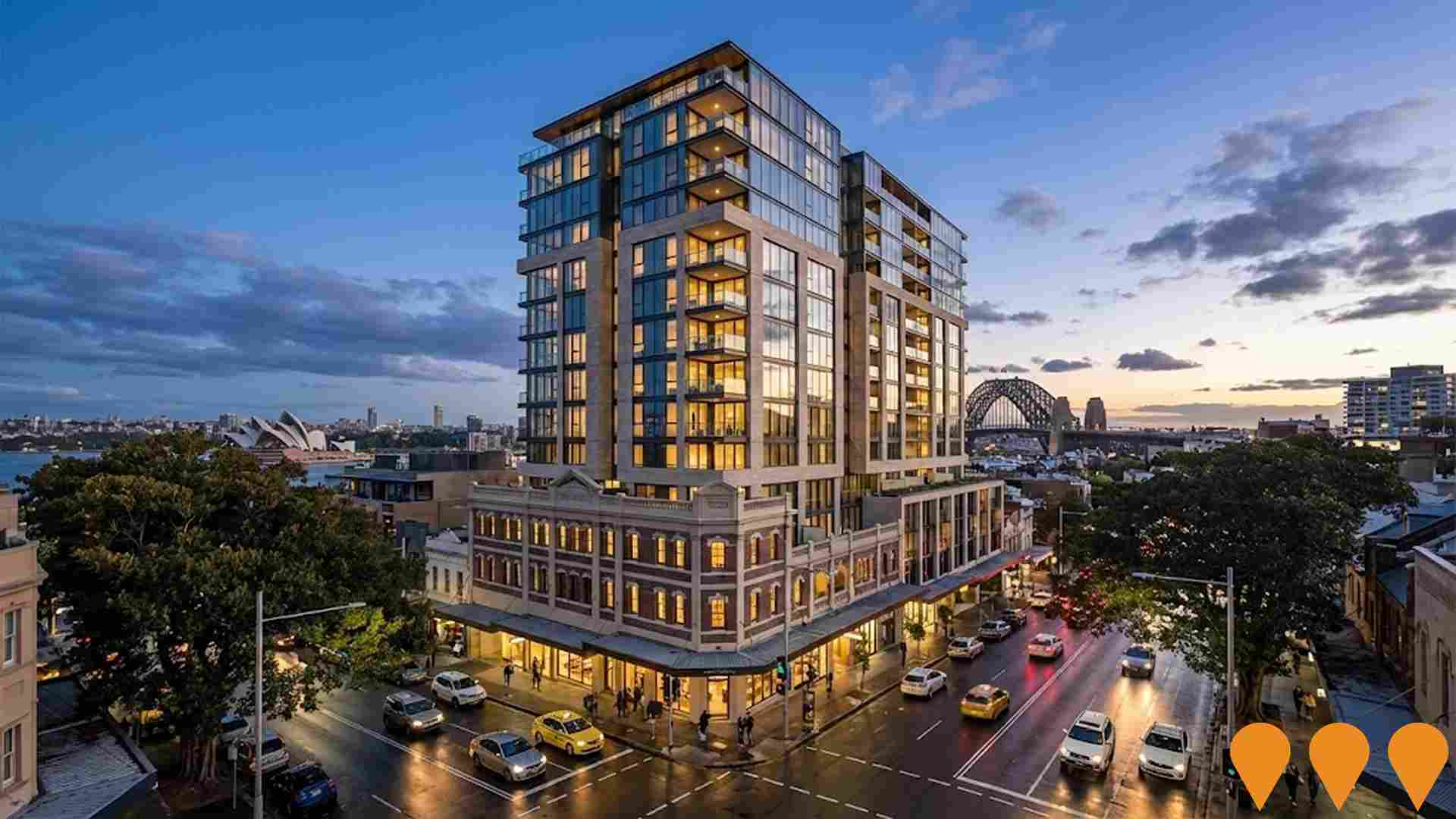
Double Bay Centre Planning & Urban Design Strategy
Comprehensive planning strategy for Double Bay commercial centre endorsed by Woollahra Council in November 2023. Strategy guides future development, urban design and public domain improvements to maintain village character while enabling appropriate growth.

Employment
Double Bay - Darling Point ranks among the top 25% of areas assessed nationally for overall employment performance
Double Bay - Darling Point has a highly educated workforce with notable representation in the technology sector. Its unemployment rate was 2.3% as of June 2025, lower than Greater Sydney's 4.2%.
Employment growth over the past year was estimated at 2.8%. As of June 2025, 6,664 residents were employed with an unemployment rate of 1.9% below the Greater Sydney average. Workforce participation was 63.6%, slightly higher than Greater Sydney's 60.0%. Key industries for employment among residents include professional & technical services, finance & insurance, and health care & social assistance.
The area has a particularly high concentration in professional & technical services, with employment levels at double the regional average. Conversely, construction is under-represented, with only 4.0% of Double Bay - Darling Point's workforce compared to Greater Sydney's 8.6%. The ratio of workers to residents, as at the Census, indicates a level of local employment opportunities above the norm. Over the 12 months to June 2025, employment increased by 2.8%, while labour force grew by 2.4%, resulting in a decrease in unemployment by 0.3 percentage points. In contrast, Greater Sydney experienced employment growth of 2.6% and labour force growth of 2.9%, with an increase in unemployment. Jobs and Skills Australia's national employment forecasts from May 2025 suggest potential future demand within Double Bay - Darling Point. These projections estimate national employment growth of 6.6% over five years and 13.7% over ten years, but growth rates vary significantly between industry sectors. Applying these industry-specific projections to Double Bay - Darling Point's employment mix suggests local growth of approximately 7.7% over five years and 15.1% over ten years.
Frequently Asked Questions - Employment
Income
The economic profile demonstrates exceptional strength, placing the area among the top 10% nationally based on comprehensive AreaSearch income analysis
AreaSearch's latest postcode level ATO data for financial year 2022 shows Double Bay - Darling Point had a median taxpayer income of $87,920 and an average of $299,259. Nationally, these figures are in the top percentile. In comparison, Greater Sydney's median was $56,994 with an average of $80,856. Based on Wage Price Index growth of 12.61% since financial year 2022, estimated incomes as of September 2025 are approximately $99,007 (median) and $336,996 (average). Census data indicates that household, family, and personal incomes in Double Bay - Darling Point rank between the 96th and 99th percentiles nationally. The earnings profile shows that 38.2% of individuals earn over $4000 per week, unlike surrounding regions where the $1500-$2999 category is predominant at 30.9%. This affluence supports premium retail and service offerings with 49.3% earning over $3000 weekly. High housing costs consume 15.7% of income, but strong earnings place disposable income at the 96th percentile, and the area's SEIFA income ranking is in the 10th decile.
Frequently Asked Questions - Income
Housing
Double Bay - Darling Point features a more urban dwelling mix with significant apartment living, with above-average rates of outright home ownership
The dwelling structure in Double Bay - Darling Point, as per the latest Census, consisted of 8.1% houses and 92.0% other dwellings (semi-detached, apartments, 'other' dwellings). This compares to Sydney metro's 18.3% houses and 81.8% other dwellings. Home ownership in Double Bay - Darling Point stood at 36.6%, with mortgaged dwellings at 18.6% and rented ones at 44.8%. The median monthly mortgage repayment was $3,200, below the Sydney metro average of $3,600. The median weekly rent was $720, compared to Sydney metro's $670. Nationally, Double Bay - Darling Point's mortgage repayments were significantly higher than the Australian average of $1,863, and rents were substantially above the national figure of $375.
Frequently Asked Questions - Housing
Household Composition
Double Bay - Darling Point features high concentrations of lone person households and group households, with a lower-than-average median household size
Family households constitute 54.6% of all households, including 15.9% couples with children, 31.1% couples without children, and 6.5% single parent families. Non-family households comprise the remaining 45.4%, with lone person households at 38.5% and group households comprising 6.9%. The median household size is 2.0 people, which is smaller than the Greater Sydney average of 2.3.
Frequently Asked Questions - Households
Local Schools & Education
Double Bay - Darling Point shows strong educational performance, ranking in the upper quartile nationally when assessed across multiple qualification and achievement indicators
Educational attainment in Double Bay - Darling Point is significantly higher than broader benchmarks. 62.5% of residents aged 15+ have university qualifications, compared to 30.4% nationally and 32.2% in NSW. Bachelor degrees are the most common at 41.3%, followed by postgraduate qualifications at 17.7% and graduate diplomas at 3.5%. Vocational pathways account for 16.7%, with advanced diplomas at 9.5% and certificates at 7.2%.
22.7% of the population is actively pursuing formal education, including 7.2% in tertiary education, 5.9% in primary education, and 5.0% in secondary education. Educational provision includes Double Bay Public School and Ascham School, serving a total of 1,406 students. The area's educational performance is exceptional, with an ICSEA score of 1172, placing local schools among the most advantaged nationally. The educational mix consists of one primary school and one K-12 school.
Frequently Asked Questions - Education
Schools Detail
Nearby Services & Amenities
Transport
Transport servicing is high compared to other areas nationally based on assessment of service frequency, route connectivity and accessibility
Public transport analysis shows 43 active transport stops operating within Double Bay-Darling Point. These include a mix of ferry, train, and bus services. They are served by 21 individual routes that collectively provide 6925 weekly passenger trips.
Transport accessibility is rated excellent, with residents typically located 117 meters from the nearest stop. Service frequency averages 989 trips per day across all routes, equating to approximately 161 weekly trips per stop.
Frequently Asked Questions - Transport
Transport Stops Detail
Health
Double Bay - Darling Point's residents boast exceedingly positive health performance metrics with very low prevalence of common health conditions across all age groups
Health outcomes data shows excellent results across Double Bay - Darling Point, with very low prevalence of common health conditions across all age groups. The rate of private health cover is exceptionally high at approximately 96% of the total population (9,826 people), compared to 89.7% across Greater Sydney and a national average of 55.3%. The most common medical conditions in the area are arthritis and asthma, impacting 6.8 and 6.1% of residents respectively.
A total of 73.2% of residents declare themselves completely clear of medical ailments, compared to 77.6% across Greater Sydney. The area has 25.9% of residents aged 65 and over (2,662 people), which is higher than the 16.4% in Greater Sydney. Health outcomes among seniors are particularly strong, performing even better than the general population in health metrics.
Frequently Asked Questions - Health
Cultural Diversity
Double Bay - Darling Point was found to be more culturally diverse than the vast majority of local markets in Australia, upon assessment of a range of language and cultural background related metrics
Double Bay-Darling Point has a higher cultural diversity than most local areas, with 16.3% of its population speaking a language other than English at home and 37.3% born overseas. Christianity is the predominant religion in Double Bay-Darling Point, making up 44.3%. However, Judaism is notably overrepresented at 11.2%, compared to 16.0% across Greater Sydney.
The top three ancestry groups are English (25.3%), Australian (17.5%), and Other (12.0%). Some ethnic groups show notable differences: Hungarian is overrepresented at 1.5% (vs regional 1.2%), Polish at 2.0% (vs 1.9%), and French at 1.2% (vs 1.5%).
Frequently Asked Questions - Diversity
Age
Double Bay - Darling Point hosts an older demographic, ranking in the top quartile nationwide
The median age in Double Bay - Darling Point is 42 years, significantly higher than Greater Sydney's average of 37 years and Australia's average of 38 years. The 75-84 age group comprises 10.7% of the population, compared to Greater Sydney, while the 5-14 age group makes up 7.1%. According to post-2021 Census data, the 75-84 age group has increased from 9.6% to 10.7%, and the 55-64 age group has decreased from 11.1% to 10.2%. By 2041, population forecasts indicate substantial demographic changes in Double Bay - Darling Point. The 85+ age group is expected to grow by 82%, reaching 849 people from the current 466. Notably, the combined 65+ age groups will account for 56% of total population growth, reflecting the area's aging demographic profile. In contrast, the 0-4 and 35-44 age cohorts are expected to experience population declines.


